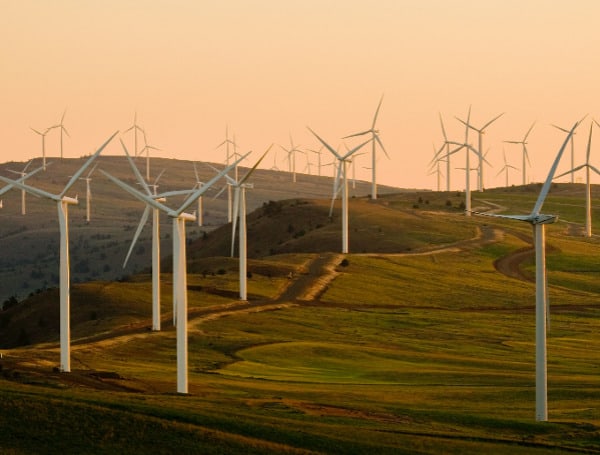Some small-town residents in Texas and Iowa are frustrated by mounting piles of wind farm waste in their communities, according to Texas Monthly.
The turbines that onshore wind developments use to generate power can be up to 200 feet in length, and the material that they are made of is rigid, according to Texas Monthly.
These attributes make the equipment difficult to remove or recycle after they are decommissioned, a reality which can lead to these turbines piling up in communities like Sweetwater, Texas, and irritating some of the locals who have to live in close proximity to the waste.
In the news: Transcript Of Pro-Trump Group Meeting Shows Georgia Republicans Borrowed Plan From Dems
Discarded turbines now occupy about 30 acres of land in Sweetwater, according to Texas Monthly. Locals worry that there may not be a viable plan for getting rid of the equipment, leaving the piles of material to sit as dens for rattlesnakes and mosquito breeding hotbeds.
“It’s just a hazard all the way around,” Sweetwater resident Pamala Meyer said, according to Texas Monthly. “It’s just a big rattlesnake farm.”
The company that owns the waste has reportedly made arrangements to handle the decommissioned equipment, but most of the waste remains in plots of land around Sweetwater, according to Texas Monthly.
“They have, in my view, abandoned them there,” Samantha Morrow, the Nolan County, Texas, attorney, said, according to Texas Monthly. “The county doesn’t have and cannot find millions of dollars to clean this up.”
In the news :Florida Gov. DeSantis Strikes Back At Those Who Want To “Politicize” The Weather
Sweetwater is not the only small-town community dealing with wind turbine waste. More than 1,000 blades have piled up in Newton, Iowa, leading state officials to determine that there was no plan for recycling the products and that the company responsible for handling the waste was effectively dumping it illegally, according to Texas Monthly.
For several years, Frank Liebl, executive director of the Newton Development Corporation, asked the company numerous times when it would start to recycle the waste, according to Texas Monthly. Liebl routinely received “the same answer: ‘Soon,’” he said, according to Texas Monthly.
While General Electric reportedly purchased the material in order to recycle it for their own purposes, it does not appear that much progress has been made toward actually removing the waste, according to Texas Monthly. The company reportedly reached a deal to have the waste removed by the end of 2023, but none of the turbines had been removed as of mid-August.
Wind power is a key component of the Biden administration’s long-term goals to have the U.S. power sector reach net-zero carbon dioxide emissions by 2035, and for the wider American economy to reach net-zero by 2050.
In the news: Trump Issues Warning To Deep State Liberals: ‘Be Careful What You Wish For’
The expected increase in wind turbine production and the waste that will come along with it could pose a mounting problem. The U.S. may generate nearly 7 million tons of waste related to wind power by 2050, according to a 2017 study published in Waste Management, a scientific journal that focuses on the academic “discussion of information on solid waste generation,” according to its website.
Android Users, Click To Download The Free Press App And Never Miss A Story. Follow Us On Facebook and Twitter. Signup for our free newsletter.
We can’t do this without your help; visit our GiveSendGo page and donate any dollar amount; every penny helps

